Who among you has been following The Young Pope, the TV series by Paolo Sorrentino? We followed it in its entirety and found it to be one of the most beautiful series ever. And then there is a theme song full of artwork that summarizes the milestones in the history of the Church. Do you want to know what the paintings are and what they represent? We list them all for you below! And let us know if you have seen the series and what you think!
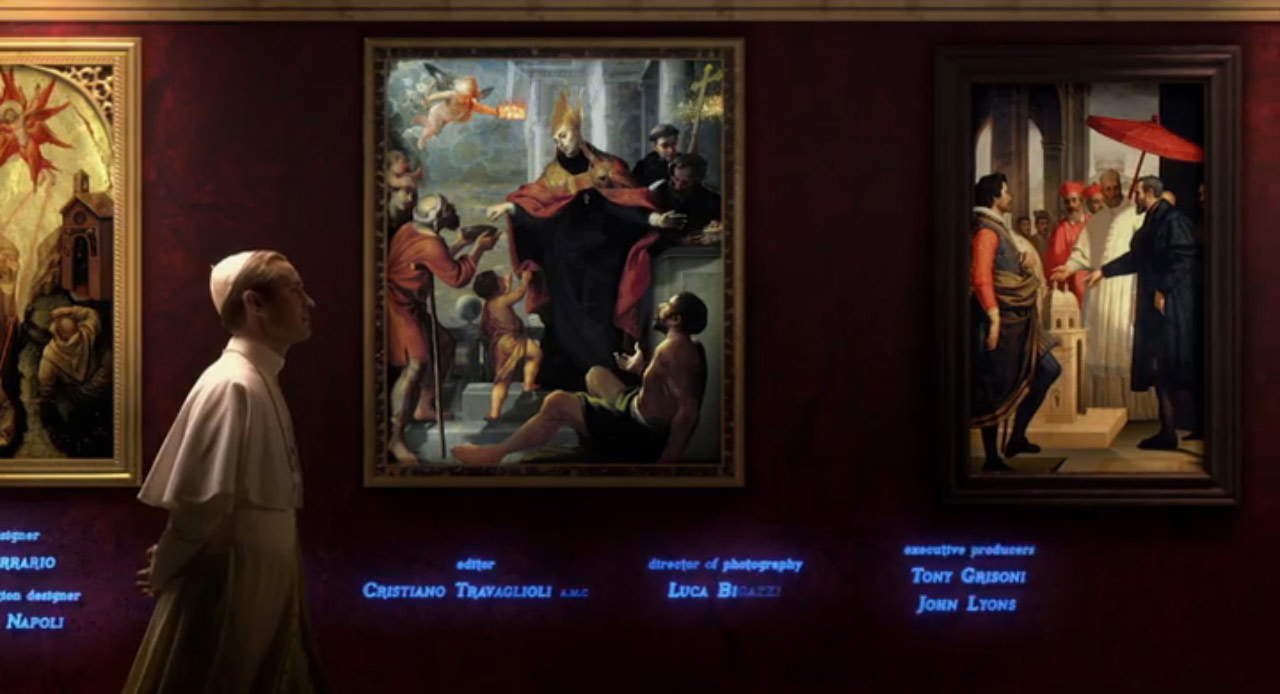 |
| Frame taken from the theme song of The Young Pope |
1. Gerrit van Honthorst, The Adoration of the Shepherds (1619-1620)
Christianity obviously originated with Jesus Christ. The episode of the adoration of the shepherds, who in Bethlehem went to the poor hut where Jesus was born, is told in the Gospel of Luke (2:8-20), which tells us how an angel had appeared to some shepherds who were watching over their flock that night to announce the birth of the Savior. Gerrit van Honthorst’s painting suffered severe damage as a result of the Georgofili massacre.
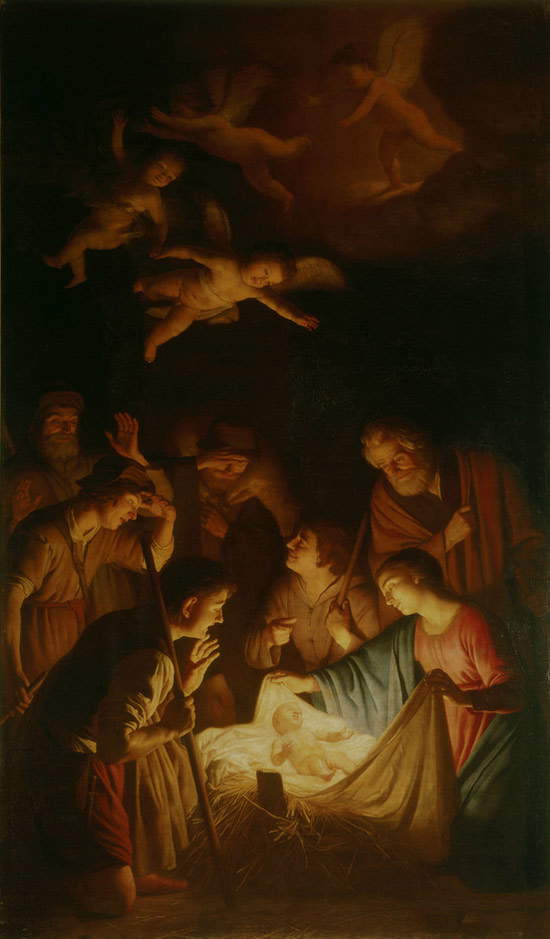 |
| Gerrit van Honthorst, Adoration of the Shepherds, before the Massacre of the Georgofili (1619-1620; oil on canvas, 338.5 x 198.5 cm; Florence, Uffizi) |
2. Perugino, The Handing Over of the Keys (1481-1482).
The apostle Peter is considered the first pope in history and it was he who led the Christian community after Jesus’ death and resurrection. In fact, Jesus himself had entrusted him with this task, in the famous Gospel episode (Matt. 16:13-20) during which Christ announces the founding of the Church, with one of the best-known but at the same time most enigmatic phrases in the Gospel: “And I say to you, You are Peter, and upon this rock I will build my church, and the gates of hell shall not prevail against it.” While the institution of the church has interpreted this passage as a justification of its authority, other exegetes have instead speculated that the “stone” referred to is Jesus himself, since shortly before Peter had recognized him as the son of God (and thus the phrase can be read “you are Peter and on this stone, that is, on the son of God whom you have just recognized, I will build my church”). The latter interpretation is also reflected in other New Testament passages.
 |
| Perugino, The Handing Over of the Keys (1481-1482; fresco, 335 x 550 cm; Rome, Vatican City, Sistine Chapel) |
3. Caravaggio, The Conversion of St. Paul (c. 1601-1605).
St. Paul was one of the greatest evangelizers in the history of Christianity, and those who still continue the work of evangelization today consider him a role model, probably the greatest. If the message of Christ, in the first centuries, reached many people in a large part of the then known world, this was thanks to St. Paul, who, in addition to being together with St. Peter the patron saint of Rome, the capital of Christianity, is also the protector of missionaries. The conversion episode is obviously the central moment of his life, when he was thunderstruck by Jesus and decided to abandon Judaism (and its persecutory intentions against Christians) and embrace the new faith.
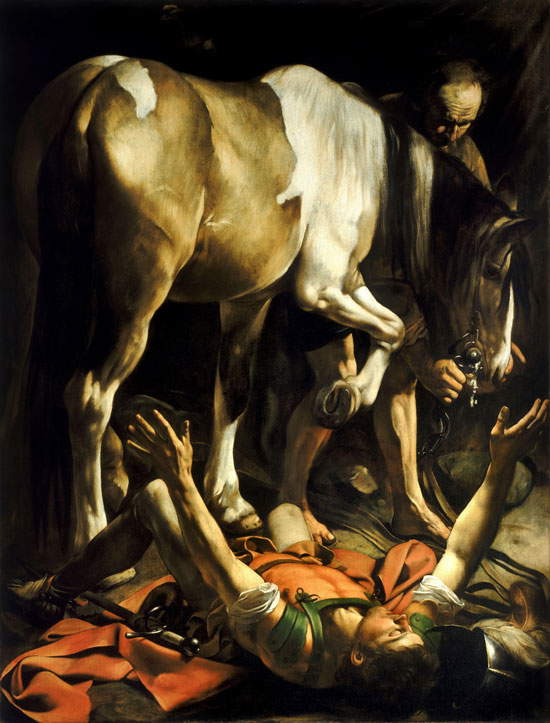 |
| Caravaggio, The Conversion of St. Paul (c. 1601-1605; oil on canvas, 230 x 175 cm; Rome, Santa Maria del Popolo, Cerasi Chapel) |
4. Vlasios Tsotsonis, The Council of Nicaea (2005).
During the First Council of Nicaea, held in the city of Nicaea (now Iznik, Turkey) in 325, a condemnation of Arianism as heresy was reached.Ario, in this painting, is depicted below, in the center, below the bishops gathered in council. Directly above him, on the other hand, we can see the figure of Emperor Constantine, who convened and presided over the council: it was but one of the first occasions on which state-church relations were made manifest.
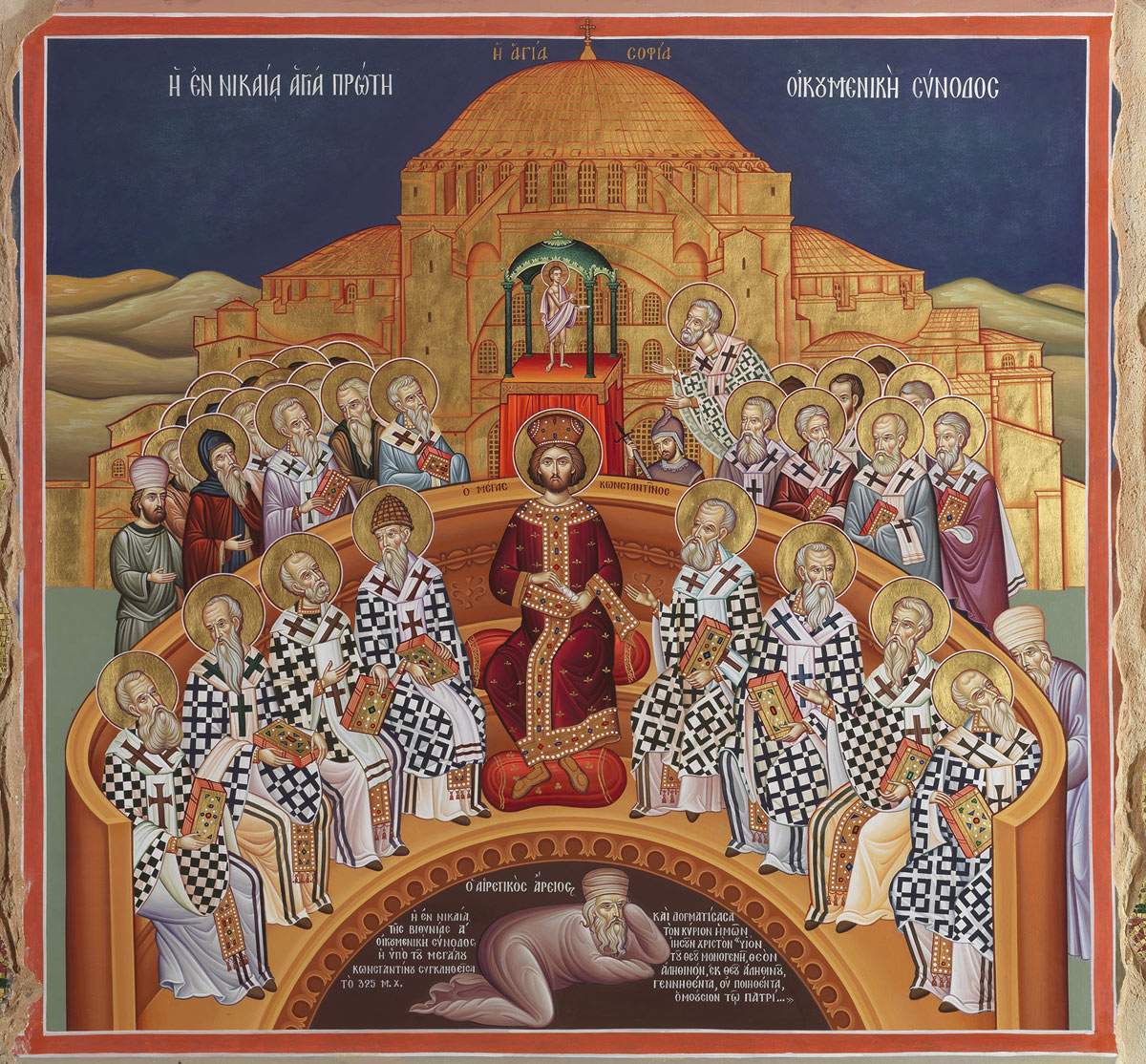 |
| Vlasios Tsotsonis, The Council of Nicaea (2005; mural painting; Meteora, Monastery of Megálo Metéoro) |
5. Francis Hayez, Peter the Hermit Preaches the Crusade (1827-1829).
Peter the Hermit was the preacher who, in the year 1096, convinced thousands of believers and pilgrims to participate in the ramshackle and poorly organized expedition that has gone down in history as the Crusade of the Poor, considered by some to be a kind of first crusade in history, although unofficial and not recognized by the Church. It did not even make it to the Holy Land, because the improvised army of Peter the Hermit was annihilated already on Turkish soil. The few survivors, including Peter the Hermit himself who had not participated in the final battle, were rescued by the Byzantine emperor Alexius I. However, this inconclusive expedition would be the prelude to centuries of fighting against the Muslims, which began in 1096 itself with the first crusade organized by the Church. The painting, in the initials, appears reflected horizontally.
 |
| Francesco Hayez, Peter the Hermit Preaches the Crusade (1827-29; oil on canvas, 210 x 280 cm; Milan, private collection) |
6. Gentile da Fabriano, Stigmata of St. Francis (c. 1420).
The role of St. Francis of Assisi, who preached in the early 13th century, is fundamental to the history of the Church: the saint, who despite being born into a wealthy family chose to live absolute poverty (so much so that he also went down in history as “the poor man of Assisi”), who advocated a return to the original Gospel message and fought against the corruption of the papacy and the clergy, is now famously one of the most revered people in the world, and his hometown, having recently hosted meetings between the different leaders of the world’s major religions, has become a symbol of peace and brotherhood.
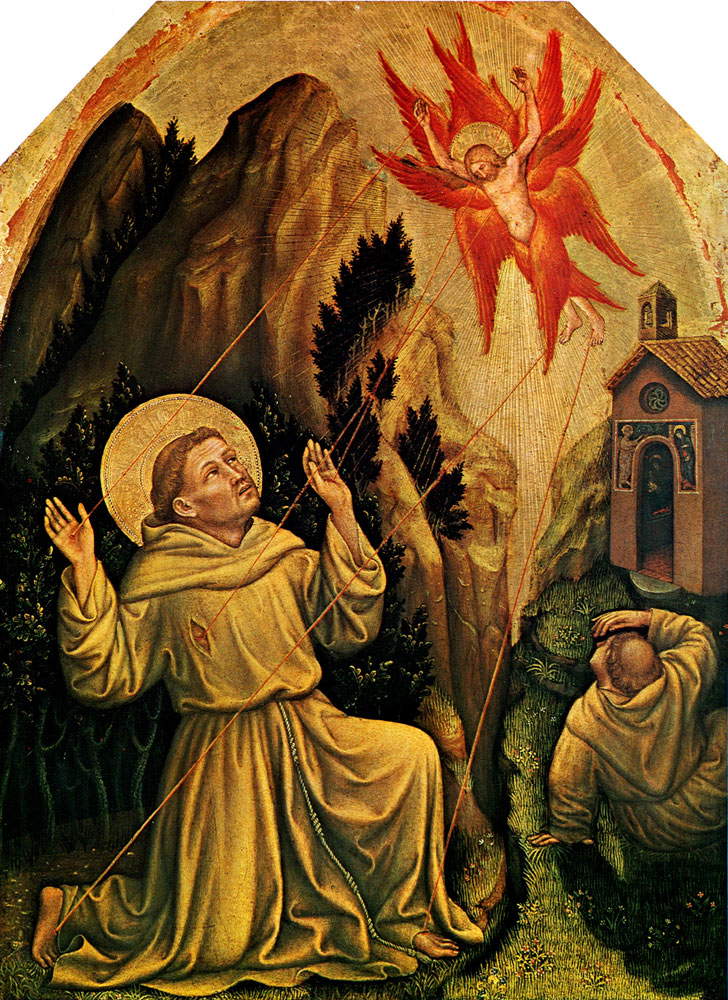 |
| Gentile da Fabriano, Stigmata of St. Francis (c. 1420; tempera on panel, 87 x 64 cm; Mamiano di Traversetolo, Magnani-Rocca Foundation) |
7. Mateo Cerezo, The Almsgiving of Saint Thomas of Villanova (ca. 1660).
A Spanish saint who lived in the late fifteenth and early sixteenth centuries and was much venerated in his home town, Thomas of Villanova is considered a remarkable model of generosity (in the palace where he exercised his role as bishop he set up a center to take in abandoned children) as well as an exemplary preacher who was always attentive to the weakest and neediest, so much so that he went so far as to spend all his fortune helping the poor. He is considered a kind of Spanish Saint Francis.
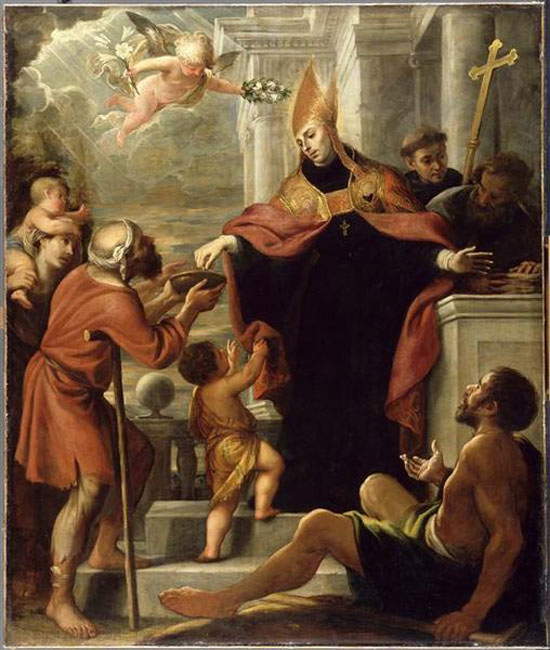 |
| Mateo Cerezo, The Almsgiving of Saint Thomas of Villanova (c. 1660; oil on canvas, 246 x 208 cm; Paris, Louvre) |
8. Domenico Crespi known as the Passignano, Michelangelo gives Paul IV the model of St. Peter’s Basilica (1618-1619)
The dome of St. Peter’s Basilica in the Vatican, the most important temple in Christendom and the site of the most important papal celebrations, was designed by Michelangelo.
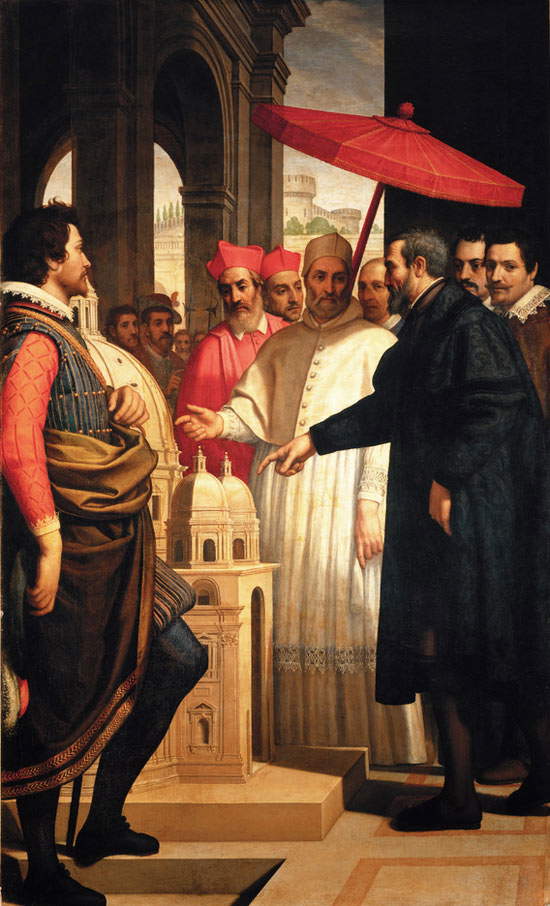 |
| Domenico Cresti called the Passignano, Michelangelo presents the model of the Dome of St. Peter’s to Paul IV (1618-1619; oil on canvas, 236 x 141 cm; Florence, Casa Buonarroti) |
9. François Dubois, The Night of St. Bartholomew (c. 1572-1584).
The frictions between Catholics and Protestants in Young Pope’s acronym are summed up in one of the bloodiest events in Church history, the so-called “Night of St. Bartholomew,” during which, on the night of August 23-24, 1572, Catholics massacred thousands of Huguenots (French Protestants of the Calvinist faith) in Paris at the height of longstanding tensions.
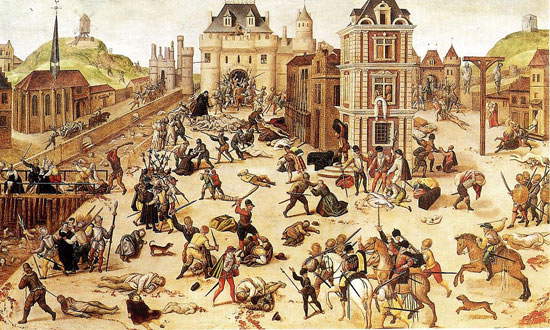 |
| François Dubois, The Night of Saint Bartholomew (c. 1572-1584; oil on panel, 94 x 154 cm; Lausanne, Musée cantonal des Beaux-Arts) |
10. Maurizio Cattelan, The Ninth Hour (1999).
Cattelan’s famous work depicting Pope John Paul II being struck by a meteorite is both a critique of the Church and a questioning of the secular institution’s future.
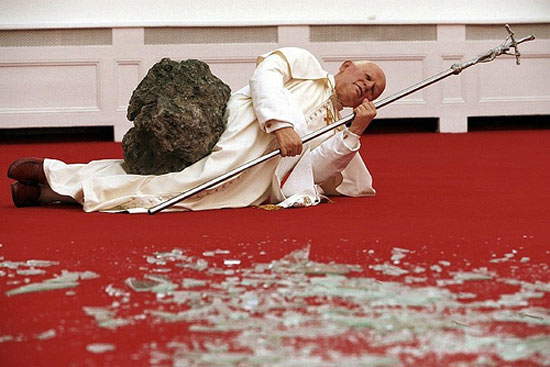 |
| Maurizio Cattelan, The Ninth Hour (1999; resin, wax, textiles, clothing, accessories, stones, glass and carpet; Private collection) |
Warning: the translation into English of the original Italian article was created using automatic tools. We undertake to review all articles, but we do not guarantee the total absence of inaccuracies in the translation due to the program. You can find the original by clicking on the ITA button. If you find any mistake,please contact us.